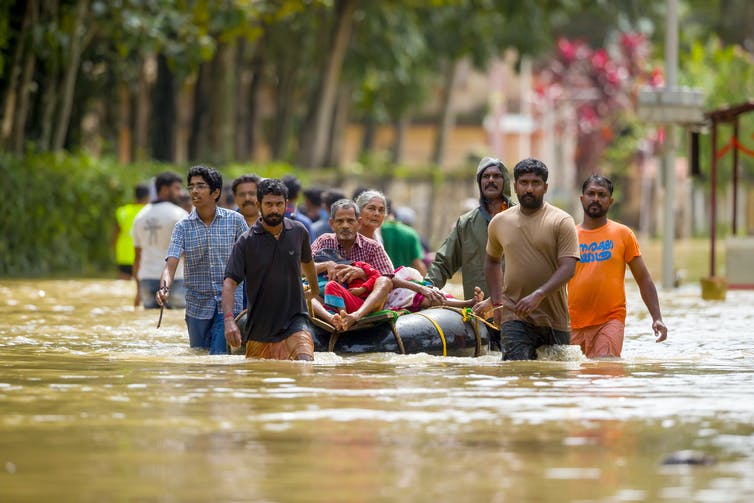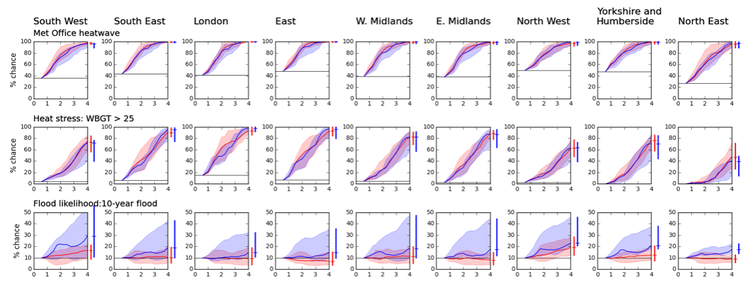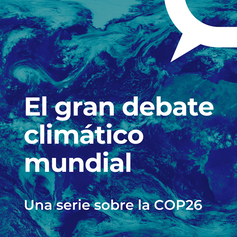At Paris Agreement, countries pledged to try to limit the temperature rise to 1.5 ℃ above pre-industrial levels. However, even if they kept their promises to reduce emissions, the truth is that we will still see an increase of around 2.7 ℃. Thus, it is not surprising that almost two-thirds of the scientists who are part of the Intergovernmental Panel on Climate Change (IPCC, for its acronym in English) affirmed in a magazine survey Nature that a rise in temperatures of 3 ℃ or more is expected.
In this situation, how different would the impacts of climate change be with a 3 ℃ temperature increase compared to 1.5 ℃?
From the outset, it is important to note that, even when the negative effects grow in line with the temperature, the climatic impacts of 3 ℃ would be more than double those that we would suffer with 1.5 ℃ more. This is because we are already around 1 ℃ above pre-industrial levels, so the impacts of a 3 ℃ rise would actually be more than four times those of 1.5 ℃ (an increase from now on by 2 ℃ versus 0.5 ℃).
However, in practice, impacts do not increase linearly with temperature. In some cases, the rise accelerates as the temperature rises, so the 3 ℃ impacts can be more than four times the 1.5 ℃ impacts. In the most extreme case, the climate system could reach a tipping point that would lead the planet to substantial change.
A couple of years ago, some colleagues and I published an investigation on the impacts of climate change as a function of different levels of global temperature rise. We found that the global average annual probability of experiencing a major heat wave increases from 5% in the period 1981-2010 to 30% with 1.5 ℃ more, and up to 80% in the case of 3 ℃.
On the other hand, the average possibility of experiencing a flood in rivers, which currently stands at 2% of the years, increases to 2.4% with a rise of 1.5 ℃ and doubles to 4% at 3 ℃ more. With an increase in temperature of 1.5 ℃, the proportion of dry spells is almost doubled, and by 3 ℃ plus this figure becomes more than triple (all these are world averages weighted according to the distribution of the population or farmland. Here you can learn more details).

Arnell et al., 2019, Author provided
Of course, there is some uncertainty in relation to these data, as reflected in the graphs above, in which it is observed that the range of possible results widens as temperatures increase.
There is also great variability in the world, which also grows with rising temperatures, which increases the geographical disparities of the impact. The risk of river flooding would increase especially rapidly in the on from Asia, for example, while the risk of drought grows by much of the African continent at a much faster rate than the world average.

Dream Walker / Shutterstock
The difference between a warming of 1.5 ℃ and another of 3 ℃ can be brutal even in places like the United Kingdom, where the impacts of climate change will be relatively less devastating than in other corners of the globe.
In a recently published study, a group of colleagues and I found that in England the average annual chance of a heat wave, as defined by the UK’s National Weather Service, goes from about 40% today to around 65% with a 1.5 ℃ warming and exceeds 90% in case the planet’s temperature rises 3 ℃. Precisely also at 3 ℃ more, the probability of experiencing at least one day a year of high heat stress due to heat becomes greater than 50%.

Arnell et al., 2021, Author provided
The average proportion of dry spells is increasing at a rate similar to the world average. The odds of what is currently considered a flood in ten years are growing in North West England from 10% a year today to 12% at 1.5 ℃ more and 16% at a temperature of 3 ℃ per cent. above the current one.
On a global scale, significant variability in terms of impact is observed throughout the United Kingdom: especially in the south and east of the country, risks related to extreme high temperatures and droughts increase, while towards the north and east of the United Kingdom. the west increases flood risks. Once again, we are all invaded by many doubts regarding these calculations, but the difference between the impacts according to the different levels of warming is clearly seen.
The graphs included in this article show us the impact of climate change on the probability or occurrence of meteorological phenomena. The actual consequences for people will depend on how these direct physical impacts (droughts, heat waves, sea level rise) affect livelihoods, health, and interactions between different elements of the economy.
Our experience during COVID-19 tells us that what at first appears to be relatively modest initial disturbances to a system can cause an unforeseen domino effect, and the same can happen with climate change. If the relationship between temperature rises and physical impacts such as melting glaciers and extreme weather is often not linear, then the relationship between temperature rises and their effect on people, societies and economies is quite possible that be much less linear still. Taken together, all of this means that a world with 3 more will be much worse than one with 1.5 ℃ more.

This article is part of the coverage of The Conversation on COP26, the Glasgow climate conference.
Follow full coverage on English, French, Canadian French, indonesian language and español, here.
Nigel Arnell, Professor of Climate Change Science, Director of the Walker Institute, University of Reading
This article was originally published on The Conversation. read the original.
Reference-www.eleconomista.com.mx